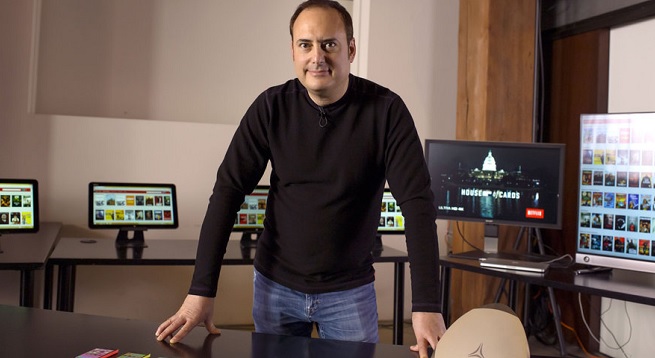Steve Perlman, the serial Silicon Valley entrepreneur who brought us OnLive and WebTV, has announced a new wireless broadband technology called pCell.
The technology will enable full-speed wireless broadband to every mobile device, regardless of how many users are using the same wireless spectrum at once, Perlman promises.
If that sounds impossible, it just might be. But Perlman’s new startup, Artemis Networks, has been working on the technology for a long time. Perlman first disclosed the technology, formerly known only as DIDO, a few years ago and is now launching it.
Perlman hopes to revive his reputation as a tech visionary with the technology. His last startup, OnLive, raised hundreds of millions of dollars to build a cloud gaming service, but it ran out of money and was sold to an investor for a pittance. He will talk about the technology in an event at Columbia University in New York on Wednesday.
The new pCell technology (demoed here) will enable mobile data users to enjoy fast internet with no congestion, no dead zones, and no weak signals, according to Artemis. With pCell, mobile networking will feel like you’re on a fiber optic network, the company says.
The technology is compatible with standard LTE (Long-Term Evolution) devices such as the iPhone and Android mobile phones.
If it works, it could be just in time to save the world from mobile spectrum exhaustion. Mobile data demand doubled in the past year and it is expected to grow 25 times by 2020, far outpacing the physical limits of conventional cellular technology. Major areas like New York, Chicago, and San Francisco already have severe mobile congestion.
With existing cell networks, a tower transmits a radio signal, forming a large cell that provides connectivity to every device within range, while avoiding interference with nearby cells. Mobile devices inside that cell have to share the fixed capacity of that cell for handling calls or data transfers. They have to take turns so they don’t interfere with each other.
pCell technology turns the entire problem inside out. Instead of dodging interference, Artemis says that pCell exploits interference, combining transmitted radio signals from multiple pCell base stations to synthesize tiny “personal cells.” Rather than hundreds of users taking turns, users can share the capacity of one large cell, giving full capacity to each user at once.
If Perlman can deliver the pCell technology, it could disrupt mobile networking companies and deliver a nirvana of content to users, such as high-speed mobile games or apps, movies, and unlimited digital content that is too bandwidth-intensive to use today.
Businessweek reported that Perlman has shown off the tech in his lab, where iPhones can display massive files streamed over wireless networks to display 4K UltraHD versions of shows such as House of Cards.
“We believe this is the largest increase in capacity in the history of wireless technology,” Perlman told Businessweek. “It’s like the wireless equivalent of fiber-optic cables.”
Artemis is putting pCell transmitters on 350 rooftops in San Francisco and it plans to work with a telecommunications company or tech giant to get commercial service running in the fourth quarter. It would compete with companies such as Redstone Technologies, which also promises wireless nirvana.
VentureBeat's mission is to be a digital town square for technical decision-makers to gain knowledge about transformative enterprise technology and transact. Learn More

